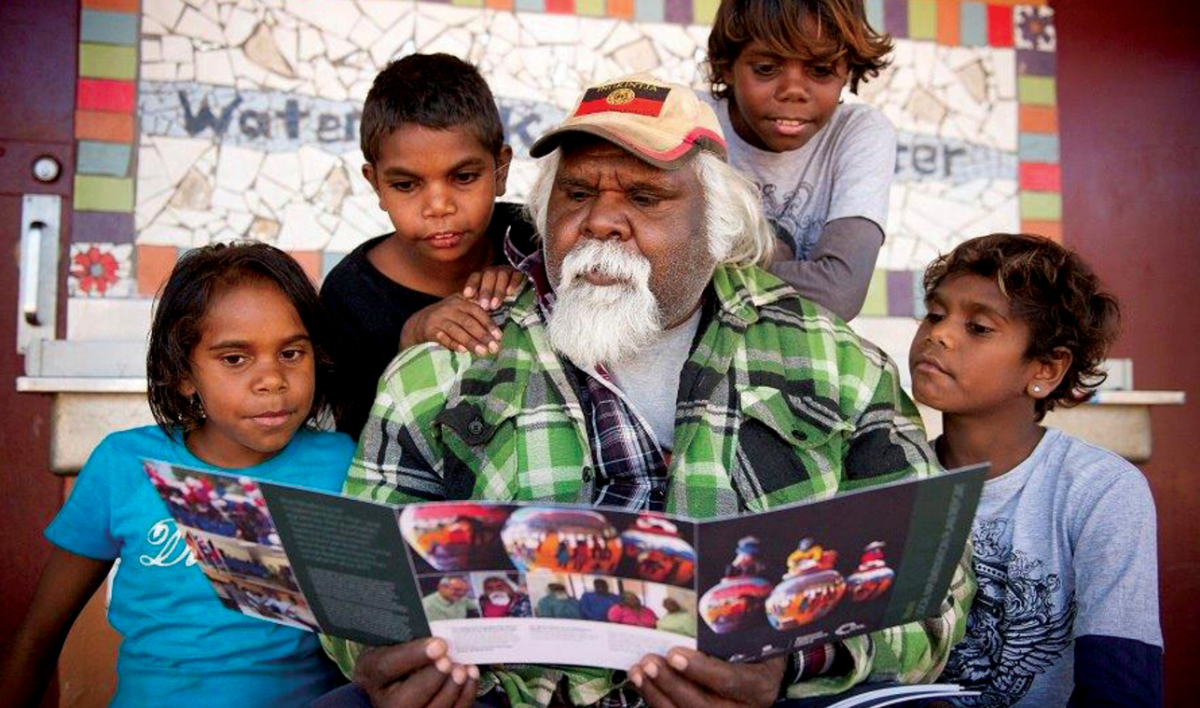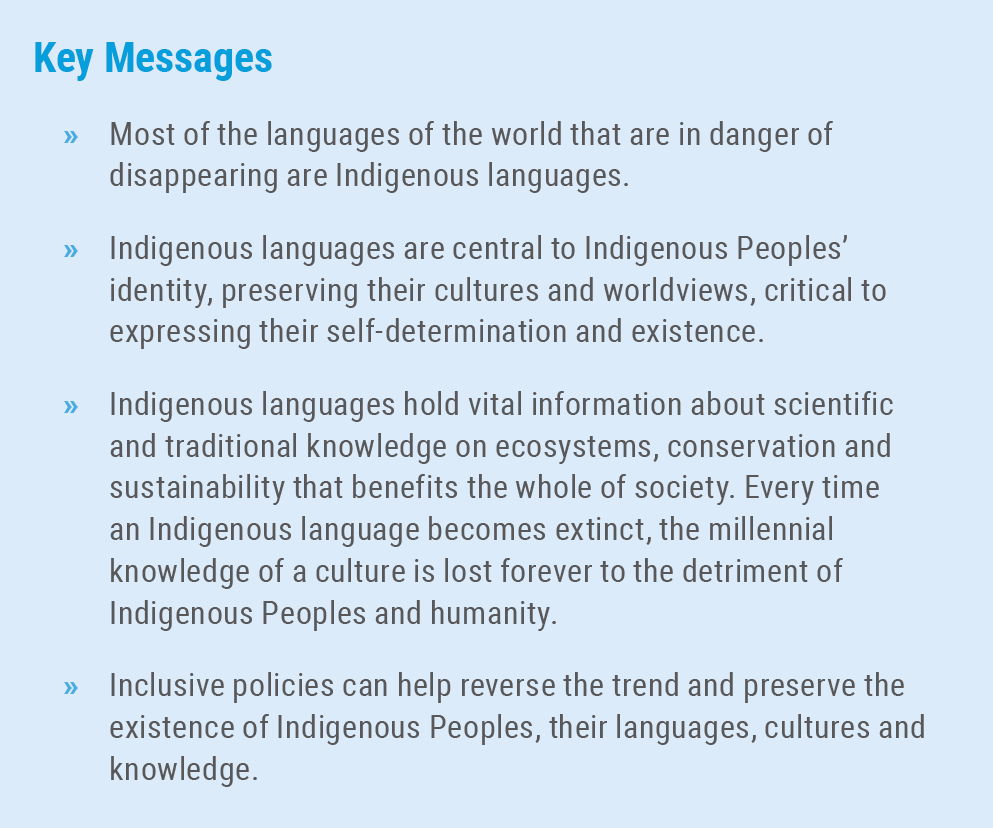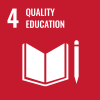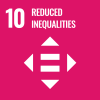
 Languages are one of the most significant emblems of human diversity, revealing how we can perceive, relate to, and understand the world differently. Languages are vehicles of our cultures, collective memory and values. They are an essential component of our identities. Out of the 6,700 languages spoken worldwide, forty percent are in danger of disappearing. Indigenous Peoples make up less than 6 percent of the global population, yet they speak more than 4,000 of the world’s languages. Most of the languages that are under threat are Indigenous languages. This dilemma is human-made and is exacerbated by ongoing assimilationist policies, social pressure, demographic change and the emphasis on a homogeneous nation State model that shares one culture and one language. The loss of global language diversity has been greatly accelerated by colonization and globalization. Other significant factors in the erosion of Indigenous languages are the dispossession of lands, territories and resources; repression and assimilation; genocide and shrinking ageing communities in which language is not passed to next generations. In North America since 1600, at least 52 Native American languages have disappeared. In Latin America, where there are more than 500 different Indigenous Peoples, at least a fifth have lost their mother tongue. Indigenous languages are not merely a tool for communication. Indigenous languages are central to Indigenous Peoples’ identity, the preservation of their cultures, worldviews and visions and something critical to them: an expression of their self-determination. Further, Indigenous scientific and traditional knowledge about ecosystems, conservation methods, plant life, animal behavior and many other aspects of the natural world are embedded in Indigenous languages. For this reason, every time an Indigenous language is lost, the ancestral knowledge of a culture is lost forever. When Indigenous languages are under threat, so too are Indigenous Peoples themselves. The regression of Indigenous languages also diminishes the possibility of Indigenous knowledge to contribute and to provide a foundation for sustainable development. In this context, it is particularly important to promote the inclusion of Indigenous knowledge in global climate science and related policy processes.
Languages are one of the most significant emblems of human diversity, revealing how we can perceive, relate to, and understand the world differently. Languages are vehicles of our cultures, collective memory and values. They are an essential component of our identities. Out of the 6,700 languages spoken worldwide, forty percent are in danger of disappearing. Indigenous Peoples make up less than 6 percent of the global population, yet they speak more than 4,000 of the world’s languages. Most of the languages that are under threat are Indigenous languages. This dilemma is human-made and is exacerbated by ongoing assimilationist policies, social pressure, demographic change and the emphasis on a homogeneous nation State model that shares one culture and one language. The loss of global language diversity has been greatly accelerated by colonization and globalization. Other significant factors in the erosion of Indigenous languages are the dispossession of lands, territories and resources; repression and assimilation; genocide and shrinking ageing communities in which language is not passed to next generations. In North America since 1600, at least 52 Native American languages have disappeared. In Latin America, where there are more than 500 different Indigenous Peoples, at least a fifth have lost their mother tongue. Indigenous languages are not merely a tool for communication. Indigenous languages are central to Indigenous Peoples’ identity, the preservation of their cultures, worldviews and visions and something critical to them: an expression of their self-determination. Further, Indigenous scientific and traditional knowledge about ecosystems, conservation methods, plant life, animal behavior and many other aspects of the natural world are embedded in Indigenous languages. For this reason, every time an Indigenous language is lost, the ancestral knowledge of a culture is lost forever. When Indigenous languages are under threat, so too are Indigenous Peoples themselves. The regression of Indigenous languages also diminishes the possibility of Indigenous knowledge to contribute and to provide a foundation for sustainable development. In this context, it is particularly important to promote the inclusion of Indigenous knowledge in global climate science and related policy processes.
The United Nations Declaration on the Rights of Indigenous Peoples
The UN Declaration on the Rights of Indigenous Peoples (“the Declaration”) establishes a universal framework of minimum standards for the survival, dignity and well-being of Indigenous Peoples worldwide. It recognizes the right to languages as an inherent right of Indigenous Peoples.
Education
Article 13. 1 of the Declaration affirms Indigenous Peoples’ right to revitalize, use, develop and transmit to future generations their histories, languages, oral traditions, philosophies, writing systems and literatures, and to designate and retain their own names for communities, places and persons. Article 14.1 guarantees Indigenous Peoples’ right to establish and control their educational systems and institutions, providing education in their own languages in a manner appropriate to their cultural methods of teaching and learning. Contrary to Articles 13.1 and 14.1 of the Declaration, many States have historically adopted assimilationist policies to eliminate Indigenous cultures and languages. In North America, during the 19th and 20th centuries, Native children en masse were forcibly removed from their homes to address the “Indian” problem and taken to boarding schools. These schools resulted in cultural alienation, loss of language, family social structures disrupted, and increased community dysfunction. Many were brutal places where children were physically, sexually and emotionally abused, and sometimes killed. Assimilation policies directed toward Indigenous Peoples were and are not unique to North America. But there are also good practices on Indigenous education; the Sámi Parliaments, located in Sweden, Norway and Finland, advances the teaching of the Sámi language and culture. The Sámi Parliament educational committee cooperates with the State educational administration and the municipalities in the Sámi region to offer education in the Sámi language in Nordic countries. Official teaching of the Sámi language started in the mid-1970s. Another good practice is the project “On the Trails of Vanishing El-molo Language”. In this project, the Gurapau Group in Marsabit County in Kenya has worked to save a language from extinction, involving 800 Indigenous persons . The Gurapau group identified men and women in El-molo villages who still possessed knowledge, understanding, and ability in the language and shared this knowledge with language teachers and other elders.
Media
Article 16 of the Declaration affirms that Indigenous People have the right to establish their own media in their languages and access to all forms of non-indigenous media without discrimination. In recent decades, Indigenous community radio and other Indigenous Peoples’ media have developed in various contexts and circumstances. Nevertheless, in many countries, Indigenous Peoples’ radio stations have yet to achieve full recognition in States’ legislation. Furthermore, Indigenous Peoples trying to establish their media are sometimes weakened and threatened by antagonistic attitudes from the State and commercial media. In many instances, Indigenous media practitioners and communicators have had to work under threats, intimidation and regularly experience violence. However, there are also good practices. In New Zealand, the Māori Television Service was established in 2003 through an Act and an agreement between the Māori and the Crown. Māori interests are represented by four council representatives on the Board, while three other members are Government representatives. Most of Māori TV’s resources come from the Government. The primary objective of the service is to promote the Māori language and culture. The service is available to the Māori and the entire New Zealand population. Through the “Indigenous Media as a Means for Intergenerational Communications” project, Aliansi Masyarakat Adat Nusantara (AMAN) in Indonesia built radio stations in three communities. As a result, Indigenous Peoples are sharing ideas to preserve their well-being, how to exercise their right to self-determination and other rights.
Accessibility in political, legal and administrative proceedings
Although Article 13.2 of the Declaration does not require Member States to provide access to Indigenous Peoples to social services in Indigenous languages, it affirms that States shall take effective measures to ensure that Indigenous Peoples can understand and be understood in political, legal and administrative proceedings, where necessary through the provision of interpretation or by other appropriate means. Concerning the justice system, Indigenous Peoples are overrepresented in every stage of criminal processes, from arrest through the serving of prison sentences, in every region of the world. Some factors contributing to this include direct or indirect discrimination in legislation, policies, law enforcement strategies, as well as language barriers. In Panama, authorities are investigating dozens of claims by Ngobé-Buglé Indigenous women that they have been subjected to sterilization procedures without their consent. The procedures allegedly took place at a public hospital run by the government. The twelve Indigenous women apparently only spoke Ngäbere. Nevertheless, there are also good practices in accessibility to Indigenous languages in government services. For instance, in Australia, the Government is expanding interpretation services for Aboriginal and Torres Strait Islander peoples, enabling effective access to government services and opportunities. The on-demand interpreting service is the first of its kind in Australia and it is in addition to a service that includes over 100 Indigenous languages that can be booked by appointment through the Aboriginal Interpreter Service. The 1992 Constitution of Paraguay recognized Guarani and Spanish as the country’s official languages. In 2015, the first executive order in Guarani was published, which established the Guarani Language Academy.
Use of Indigenous languages in cities and other countries
Although the Declaration does not explicitly refer to the linguistic rights of Indigenous Peoples migrating to cities or to other countries, Article 13.2 is not limited to Indigenous Peoples living in rural areas. Therefore, States should ensure that Indigenous Peoples can understand and be understood in political, legal and administrative proceedings, where necessary through the provision of interpretation or by other appropriate means when they migrate to cities or other countries. For example, Indigenous Peoples in immigration facilities who emigrate from Mexico and Central America to the United States often lack adequate access to interpretation services in their own languages. Immigration authorities are required by US law to take reasonable steps to provide meaningful access to those with limited English proficiency. Indigenous language speakers may otherwise not be able to seek medical support, ask questions about their legal cases or articulate their fear in an asylum hearing or interview. There are good practices providing access to services and information for Indigenous migrants in Indigenous languages. The Consulate of Mexico in New York provides consulate information about services in the United States in 25 Indigenous languages on its website. The Government of Bogota, Colombia has established eleven casas del pensamiento or houses of thought. These are houses designed for Indigenous children who emigrate to the city of Bogota and are vulnerable due to the internal conflict, violence due to drug trafficking activities or other situations. The places are designed for Indigenous children to be safe, learn and preserve their cultures and languages.
Technology
In response to the threat of language loss, some Indigenous Peoples are turning towards accessible technology to save and revitalize their languages. Indigenous Peoples have noted that language tools can make Indigenous languages more accessible, especially to young people. The use of such technologies is also an important tool to employ Indigenous Peoples’ knowledge in the preservation of precious marine and terrestrial ecosystems such as forests. It is crucial to build partnerships between Indigenous Peoples, and the private and public sectors to promote the revitalization of Indigenous languages through technology and to protect and transfer Indigenous Peoples’ knowledge, as an effective means to advance the SDGs. For instance, in 2015, the Chickasaw Nation partnered with language experts of Rosetta Stone, a language learning software platform, to establish an educational tool for language learning. The lessons were developed in conjunction with native Chickasaw speakers. Rosetta Stone is available free to Chickasaw citizens. The Chickasaw Basic app was the first to be developed by a tribe or nation. Basic training/learning in indigenous languages is also being offered online and free of charge to anybody, not just members of given indigenous groups. At the same time, some technology companies are helping to promote Indigenous languages and cultures. For instance, Google has included some Indigenous languages on its translation platform, including Quechua, Guarani and Aymara. In July 2022, Meta announced Inuktitut is available as a language setting on Facebook desktop. The initiative to translate Facebook to Inuktitut is the culmination of a partnership with Nunavut Tunngavik Incorporated (NTI) to promote the daily use of the Inuit language spoken in communities.
International Decade of Indigenous Languages
Since its establishment, the Permanent Forum on Indigenous Issues (PFII) has drawn attention to the critical situation of Indigenous Languages. Based on this, the UN Department of Economic and Social Affaires (DESA) organized two international expert group meetings in 2008 and 2016 on Indigenous languages. Grounded on a recommendation of the PFII, the UN General Assembly proclaimed an International Year of Indigenous Languages in 2019. As revitalizing Indigenous languages requires sustained efforts, the UN General Assembly proclaimed the International Decade of Indigenous Languages (2022-2032). The International Decade aims to draw attention to the critical loss of Indigenous languages and the urgent need to preserve, revitalize and promote Indigenous languages and to take further urgent steps at the national and international levels. UNESCO was designated as the lead agency for the International Decade in collaboration with the DESA and other relevant agencies. UNESCO and its partners developed a Global Action Plan for the International Decade. Some Member States such as Bolivia, Brazil, Colombia, Mexico and the Russian Federation have already adopted national action plans for its implementation.
Policy recommendations
Language loss is neither inevitable nor irreversible. Listed below are a series of policy recommendations that can strengthen the preservation of Indigenous languages.
Role of Member States
The proclamation of Indigenous languages as co-official languages, preferably at the constitutional level, constitutes an essential first step that shows the political will to recognize, promote and protect Indigenous languages. Revitalizing Indigenous languages requires developing education policies, establishing or strengthening bilingual and intercultural education, training teachers and developing materials to increase language use and proficiency. It is particularly relevant for Members States to support and enhance Indigenous Peoples’ education systems. Respect, guarantee and support Indigenous Peoples’ initiatives establishing their media in their own languages and providing all licenses and technical support is required. Facilitate access to public services in Indigenous languages, including, but not limited to education, health and the justice system. Strengthen access to services in Indigenous languages for Indigenous migrants, both foreign and national. Establish national mechanisms with adequate funding for the successful implementation of the Global Action Plan of the International Decade of Indigenous Languages and develop appropriate measures for implementing it in partnership with Indigenous Peoples. Monitor the implementation of those measures in partnership with Indigenous Peoples using specific measurement indicators.
Role of Indigenous Peoples
Continue advocating to control their educational systems and media in their languages. Lead the processes to preserve, revitalize and promote their languages and draw up their own plans to implement the Global Action Plan of the International Decade of Indigenous Language. Indigenous women and elders should be supported in transmitting scientific and traditional knowledge to future generations. Indigenous youth must maintain their Indigenous identity and cultures, including Indigenous languages, being proud of them. They could partner with stakeholders to develop technological programs for their preservation.
Role of the private sector
Contribute to the preservation and revitalization of Indigenous languages. The partnership between the private sector and Indigenous Peoples can facilitate the creation of Indigenous language inventories, digitalization, applications or other tools to attain this goal. These initiatives should always respect the free, prior and informed consent of Indigenous Peoples involved and data and other information provided by Indigenous Peoples should remain under their control.
Role of the United Nations system
United Nations entities should actively engage in the implementation Global Action Plan for the International Decade of Indigenous Languages and respect and advocate for the linguistic rights of Indigenous Peoples. Further, United Nations Country Teams should support preserving and revitalizing Indigenous languages in programmatic areas such as education.
 Welcome to the United Nations
Welcome to the United Nations

